Article of the Month JUNE 2015 : Daisy's Ricefish (Oryzias woworae)
+3
caoder
alexmtl
guppyguy
7 posters
:: General :: Featured Threads
Page 1 of 1
 Article of the Month JUNE 2015 : Daisy's Ricefish (Oryzias woworae)
Article of the Month JUNE 2015 : Daisy's Ricefish (Oryzias woworae)
Daisy's Ricefish (Oryzias woworae)
A beautiful little fish originating from Indonesia, I have admired since they were first classified very recently in 2010. My interest in this genera began many years ago, and was one of my first killifish experiences as a young hobbyist.
I had kept the more common medaka, or Japanese ricefish, Oryzias latipes, as a lab specimen and a biology model for egg development as a teenager. I had at the time two full walls of my parent's basement with aquariums, and the medaka were one of my favourites. Contrary to today, I was not keeping livebearers, and between the angelfish, bumblebee gobies and shell dwellers, I devoted a small tank to keeping what was a small little colony. What had interested me back then was the unique egg clinging that allowed for easy collection. The females will clutch the eggs by the ventral fin and the male fertilizes them over successive matings. The eggs will eventually be fastened haphazardly to plants and mops and can be seen developing over 10 to 15 days. As the eggs are relatively large, and the fry hatchlings sizable enough to be observed by the naked eye, I was keen to keep these fish as a unique and subtle dainty. As killifish they are easy to care for, requiring no heater and little, if any water adjustment as they are hardy and not finicky.
I was surprised when I first saw them in the LFS tank last March 2015 and I was not sure at first whether the sign was correct. On the online auction site, Daisy's Ricefish is not common though can be found occasionally for around $8 to $10. In order to verify the fish at the LFS I snapped a quick few photos and seached the internet to confirm the identity. Then I began a four week wait to ensure that the fish did not develop disease and that only the stronger ones remained. I casually checked back every week as I secretly monitored their condition. Noticing that the numbers in the tank began to dwindle, I thought that a "wait and see" approach was a prudent way to avoid introducing disease.
After the fourth week, I decided to purchas some from the local aquarium store back in early April 2015. I had asked the store employee to get me four of the more healthier ones, and asked a few questions about the history of the tank. Apparently most had died off and the remainder were looking thin, so I was more glad than disappointed for the waiting.
Still worried about disease I decided to isolate them in a small 10 gallon tank shared by numerous snails (killifish diseases don't kill snails I'm guessing). I had to travel for days at a time away from them, so they were fed a very simple diet of flake food twice a day more to suit my schedule than their breeding regimen. After a few weeks the adults transformed very nicely, with both sexes exhibiting red edging to the fins and around the outline of the body. A blue steel body provides a striking contrast to the knife like shape. The eyes, are of course, reflective blue and the small group was a pleasure to watch as they acclimated to the tank environment.
A beautiful little fish originating from Indonesia, I have admired since they were first classified very recently in 2010. My interest in this genera began many years ago, and was one of my first killifish experiences as a young hobbyist.
I had kept the more common medaka, or Japanese ricefish, Oryzias latipes, as a lab specimen and a biology model for egg development as a teenager. I had at the time two full walls of my parent's basement with aquariums, and the medaka were one of my favourites. Contrary to today, I was not keeping livebearers, and between the angelfish, bumblebee gobies and shell dwellers, I devoted a small tank to keeping what was a small little colony. What had interested me back then was the unique egg clinging that allowed for easy collection. The females will clutch the eggs by the ventral fin and the male fertilizes them over successive matings. The eggs will eventually be fastened haphazardly to plants and mops and can be seen developing over 10 to 15 days. As the eggs are relatively large, and the fry hatchlings sizable enough to be observed by the naked eye, I was keen to keep these fish as a unique and subtle dainty. As killifish they are easy to care for, requiring no heater and little, if any water adjustment as they are hardy and not finicky.
I was surprised when I first saw them in the LFS tank last March 2015 and I was not sure at first whether the sign was correct. On the online auction site, Daisy's Ricefish is not common though can be found occasionally for around $8 to $10. In order to verify the fish at the LFS I snapped a quick few photos and seached the internet to confirm the identity. Then I began a four week wait to ensure that the fish did not develop disease and that only the stronger ones remained. I casually checked back every week as I secretly monitored their condition. Noticing that the numbers in the tank began to dwindle, I thought that a "wait and see" approach was a prudent way to avoid introducing disease.
After the fourth week, I decided to purchas some from the local aquarium store back in early April 2015. I had asked the store employee to get me four of the more healthier ones, and asked a few questions about the history of the tank. Apparently most had died off and the remainder were looking thin, so I was more glad than disappointed for the waiting.
Still worried about disease I decided to isolate them in a small 10 gallon tank shared by numerous snails (killifish diseases don't kill snails I'm guessing). I had to travel for days at a time away from them, so they were fed a very simple diet of flake food twice a day more to suit my schedule than their breeding regimen. After a few weeks the adults transformed very nicely, with both sexes exhibiting red edging to the fins and around the outline of the body. A blue steel body provides a striking contrast to the knife like shape. The eyes, are of course, reflective blue and the small group was a pleasure to watch as they acclimated to the tank environment.
Last edited by alexmtl on Mon Jul 06, 2015 4:54 pm; edited 2 times in total

alexmtl- Veteran Member

- Posts : 3274
Join date : 2013-09-07
Location : Montreal Quebec
 Re: Article of the Month JUNE 2015 : Daisy's Ricefish (Oryzias woworae)
Re: Article of the Month JUNE 2015 : Daisy's Ricefish (Oryzias woworae)
I began to notice a more brilliant blue and shading to the two males. The 2 females visibly were deeper and plumper. I had read that the maximum size is about 1.5 inches with both males and females equal in length. They are apparently have a life span of 2 years. I kept an anxious eye for signs of ventrally attached eggs.
In late May I noticed the clutches. I am not sure how many were deposited but I was hoping for at least a dozen to survive the snails in the plants, to grow and develop. Another long trip meant that I had to consolidate my tanks down to four main aquariums for the automatic feeders (I only have 4 feeders). I chose to pair them up with Xiphophorus continens. Hoping for the best, I left for my travels.
Upon my return after three weeks away, I was saddened by the loss of three ricefish, and one remaining one, fairly emaciated. My guess is that the X continens are much too active for these fish, so a slower, more docile tank mate species would probably have been better. The original breeder tank had been left empty, and I was hoping to find that at least a few eggs had hatched out. I searched for a few moments, and was disappointed to not find any sign of hatchlings that evening. Unpacking and settling back in after weeks of travel meant that more urgent tasks needed to happen that night.
In late May I noticed the clutches. I am not sure how many were deposited but I was hoping for at least a dozen to survive the snails in the plants, to grow and develop. Another long trip meant that I had to consolidate my tanks down to four main aquariums for the automatic feeders (I only have 4 feeders). I chose to pair them up with Xiphophorus continens. Hoping for the best, I left for my travels.
Upon my return after three weeks away, I was saddened by the loss of three ricefish, and one remaining one, fairly emaciated. My guess is that the X continens are much too active for these fish, so a slower, more docile tank mate species would probably have been better. The original breeder tank had been left empty, and I was hoping to find that at least a few eggs had hatched out. I searched for a few moments, and was disappointed to not find any sign of hatchlings that evening. Unpacking and settling back in after weeks of travel meant that more urgent tasks needed to happen that night.

alexmtl- Veteran Member

- Posts : 3274
Join date : 2013-09-07
Location : Montreal Quebec
 Re: Article of the Month JUNE 2015 : Daisy's Ricefish (Oryzias woworae)
Re: Article of the Month JUNE 2015 : Daisy's Ricefish (Oryzias woworae)
As many of you know, overseas travel brings with it a certain time derrangement and weariness. The next day, slowly, I began the water changes in the tanks. When I reached the original breeder tank, I had to double take on the little blue specks darting around the plants. I went to get my flashlight and to joy, little slivers headed by blue eyes were moving about. I think I had at least twenty.
Well the story will continue as these blue eyes grow into ricefish. As I had only had the adults for a little over a month, it is a joy to have grand blessing to rear these hatchlings into adult hood. That's what is so interesting about this hobby; sometimes disappointment, sometimes sadness, and often heartbreaks. But out of each situation, comes reward and fulfillment.

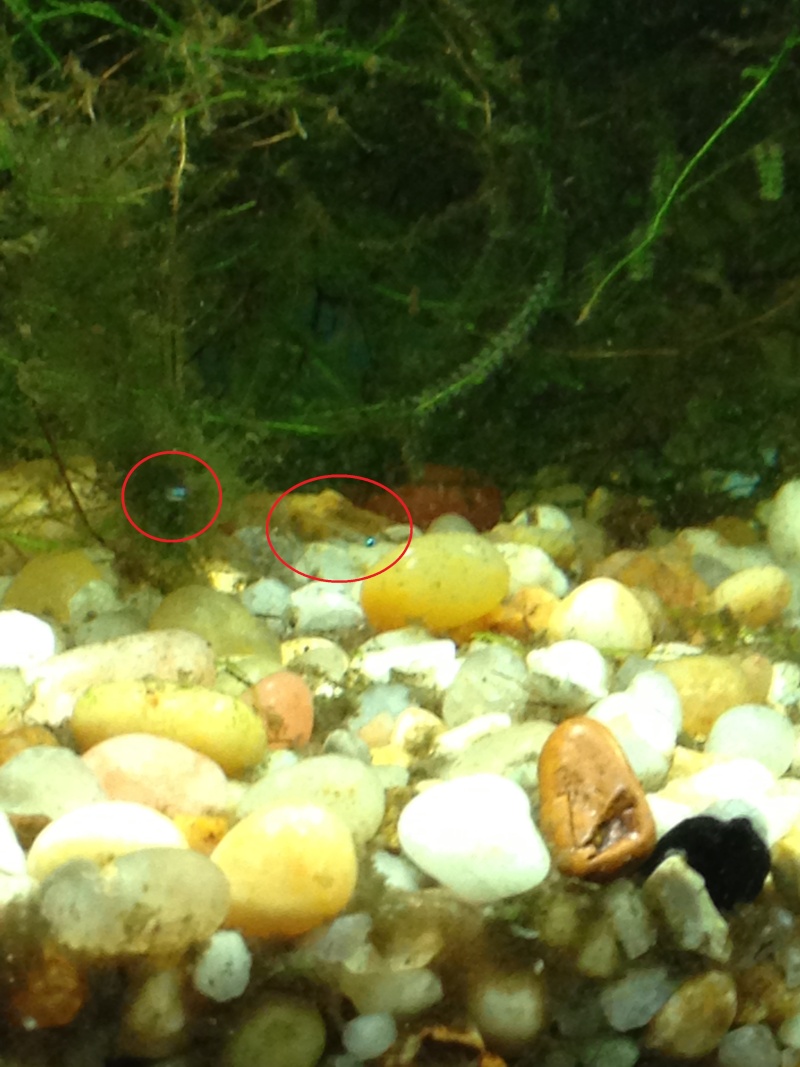
Well the story will continue as these blue eyes grow into ricefish. As I had only had the adults for a little over a month, it is a joy to have grand blessing to rear these hatchlings into adult hood. That's what is so interesting about this hobby; sometimes disappointment, sometimes sadness, and often heartbreaks. But out of each situation, comes reward and fulfillment.



alexmtl- Veteran Member

- Posts : 3274
Join date : 2013-09-07
Location : Montreal Quebec
 Re: Article of the Month JUNE 2015 : Daisy's Ricefish (Oryzias woworae)
Re: Article of the Month JUNE 2015 : Daisy's Ricefish (Oryzias woworae)
What an happy twist on the story. Sorry to hear you lost the adults while on your trip, but what a fantastic find on the fry! What else can you share about these little fish? (In general)
I'm looking forward to seeing how these little guys develop for you.
I'm looking forward to seeing how these little guys develop for you.
 Re: Article of the Month JUNE 2015 : Daisy's Ricefish (Oryzias woworae)
Re: Article of the Month JUNE 2015 : Daisy's Ricefish (Oryzias woworae)
What a great story and write up. Full of up's and downs. I enjoyed reading this and look forward to future updates and pics.

guppyguy- Moderator
- Posts : 2165
Join date : 2014-01-24
Location : Wheatley, ON
 Re: Article of the Month JUNE 2015 : Daisy's Ricefish (Oryzias woworae)
Re: Article of the Month JUNE 2015 : Daisy's Ricefish (Oryzias woworae)
CAAIndie wrote:What else can you share about these little fish? (In general)
Common name : Daisy's Ricefish (Oryzias woworae), Neon Blue Daisy’s Rice Fish, Daisy’s Blue Killifish, Cardinal Ricefish. Named for Daisy Wowor from Java, Indonesia who collected and photographed the first fish.
Distribution and Habitat : South East Sulawesi (Sulawesi Tenggara) Indonesia. The type biotope is a freshwater stream flowing under 80% canopy cover with a mixed substrate of mud / sand plus patches of leaf litter.
Size : Maximum SL 25 – 30 mm, approx 1.5 to 1.6 inches both sexes
Gender differences : size similar. Adult males have more color, will have longer dorsal and anal fins and a slimmer body shape.
Water Conditions :
As close to neutral as possible
pH between 6.0 – 7.5.
Temperature: 23 – 27 °C (74-81 deg F)
Hardness: 90 – 268 ppm
First Described in 2010 :
Lynne R. Parenti and Renny K. Hadiaty (2010) A New, Remarkably Colorful, Small Ricefish of the Genus Oryzias (Beloniformes, Adrianichthyidae) from Sulawesi, Indonesia. Copeia: May 2010, Vol. 2010, No. 2, pp. 268-273.

alexmtl- Veteran Member

- Posts : 3274
Join date : 2013-09-07
Location : Montreal Quebec
 Re: Article of the Month JUNE 2015 : Daisy's Ricefish (Oryzias woworae)
Re: Article of the Month JUNE 2015 : Daisy's Ricefish (Oryzias woworae)
guppyguy wrote:What a great story and write up. Full of up's and downs. I enjoyed reading this and look forward to future updates and pics.
Thanks guppyguy. I always appreciate your encouragement and support.

alexmtl- Veteran Member

- Posts : 3274
Join date : 2013-09-07
Location : Montreal Quebec
 Re: Article of the Month JUNE 2015 : Daisy's Ricefish (Oryzias woworae)
Re: Article of the Month JUNE 2015 : Daisy's Ricefish (Oryzias woworae)
Also I thought Gary had some...... But glad to see the breeding. These little fish have very hardy fry.

caoder- Pleco Poster

- Posts : 689
Join date : 2013-09-07
Location : Montreal
 Re: Article of the Month JUNE 2015 : Daisy's Ricefish (Oryzias woworae)
Re: Article of the Month JUNE 2015 : Daisy's Ricefish (Oryzias woworae)
Can this one be nominated still for the June article/thread award?

Biulu- Support
- Posts : 3694
Join date : 2013-09-12
Location : Montreal, Quebec
 Re: Article of the Month JUNE 2015 : Daisy's Ricefish (Oryzias woworae)
Re: Article of the Month JUNE 2015 : Daisy's Ricefish (Oryzias woworae)
Nice thank you Alex! Lovely little fish. I hope you have lots of success with it.

GaryE- Veteran Member

- Posts : 2505
Join date : 2013-09-07
 Re: Article of the Month JUNE 2015 : Daisy's Ricefish (Oryzias woworae)
Re: Article of the Month JUNE 2015 : Daisy's Ricefish (Oryzias woworae)
What caught my eye was that pretty little checkerboard!

GaryE- Veteran Member

- Posts : 2505
Join date : 2013-09-07
 Re: Article of the Month JUNE 2015 : Daisy's Ricefish (Oryzias woworae)
Re: Article of the Month JUNE 2015 : Daisy's Ricefish (Oryzias woworae)
let me know if you get these going had them at one time and would love them again
 Re: Article of the Month JUNE 2015 : Daisy's Ricefish (Oryzias woworae)
Re: Article of the Month JUNE 2015 : Daisy's Ricefish (Oryzias woworae)
Well I have at least twenty or so fry swimming around. Not sure they will be ready until next spring though.

alexmtl- Veteran Member

- Posts : 3274
Join date : 2013-09-07
Location : Montreal Quebec
 Re: Article of the Month JUNE 2015 : Daisy's Ricefish (Oryzias woworae)
Re: Article of the Month JUNE 2015 : Daisy's Ricefish (Oryzias woworae)
No problem put me down on the spring list i am sure you will have other things. I want at the time also.
 Similar topics
Similar topics» Article of the Month APRIL 2015 : So you want to buy a Koi…
» Article of the Month MAY 2015 “The medication never worked…”
» Article of the Month JULY 2015 : BBA - How do you tackle it?
» Article of the Month SEPTEMBER 2015 : Steve's new Koi House...
» Article of the Month : OCTOBER 2015 : Krib babies!!!!
» Article of the Month MAY 2015 “The medication never worked…”
» Article of the Month JULY 2015 : BBA - How do you tackle it?
» Article of the Month SEPTEMBER 2015 : Steve's new Koi House...
» Article of the Month : OCTOBER 2015 : Krib babies!!!!
:: General :: Featured Threads
Page 1 of 1
Permissions in this forum:
You cannot reply to topics in this forum

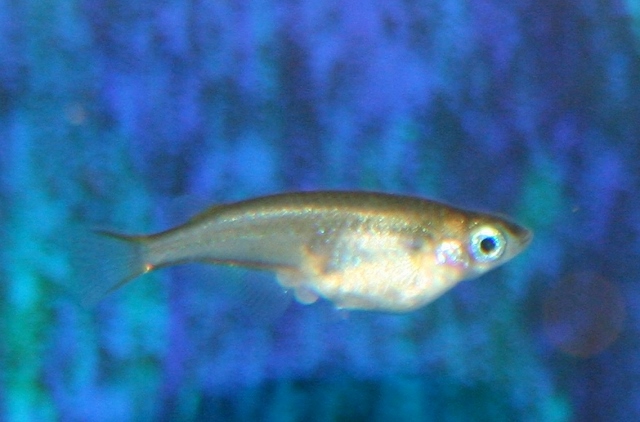
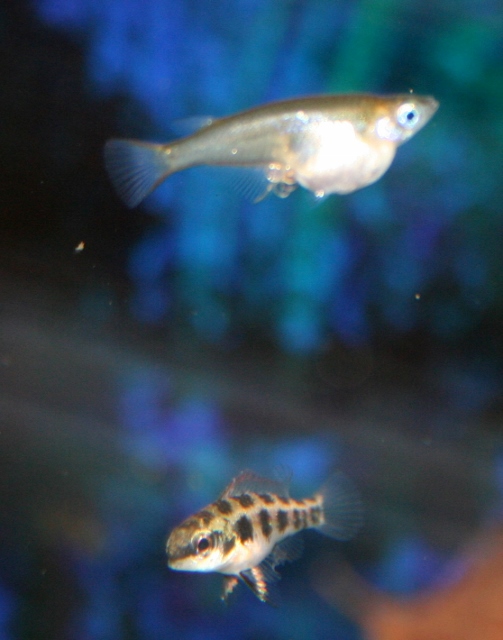

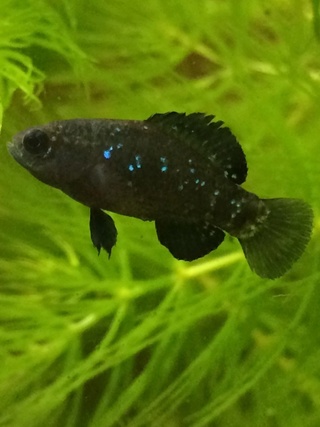 Alexmtl
Alexmtl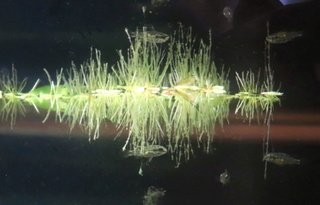
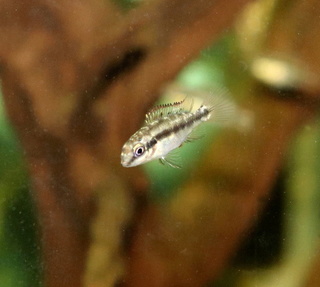

» Anyone still around? Need help transporting fish
» Stocking suggestions
» New Tank Purchase
» 3 Gallon Tetra half moon tank
» White floaty stuff in gold fish tank
» Ammonia in tap water
» Need advice for beginner with fresh water tank
» Fluval FX5 hose size?
» smart fish, dumb fish, pink fish...um, what rhymes with dumb?
» Is K&E sandblasting sand same as Black diamond?
» What the...is that a leak? NOOOOOOOOOOO!!!!! (a comedy of horrors...)
» Air stones and the noise they make
» aquatic medications
» film like stuff on the water surface of shark tank
» Articles on swordtail behaviour and fathead minnows
» Lets see your predators!
» Humane way to PTS a shark
» My tanks (Introducing myself)
» Build your own aquarium